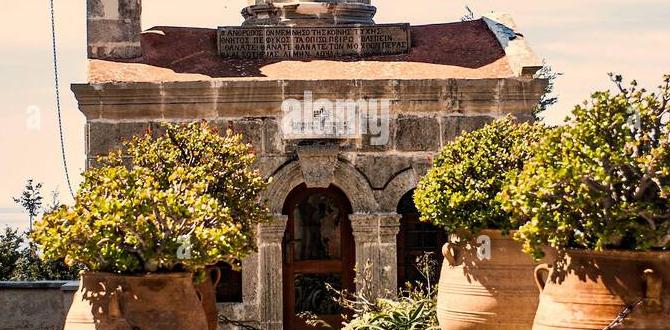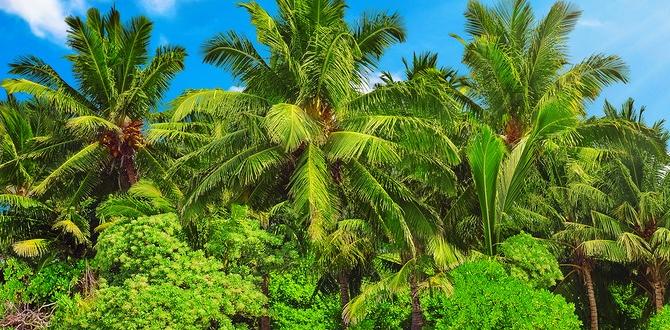Find your perfect Azores escape with this no-crowds itinerary, focusing on quieter islands and off-peak adventures for a truly serene experience. Discover hidden gems and enjoy peace away from the usual tourist trails.
Dreaming of emerald landscapes, volcanic wonders, and the soothing rhythm of island life, but dreading the bustling crowds? The Azores archipelago, a breathtaking cluster of nine islands in the mid-Atlantic, offers an unparalleled escape. Yet, many visitors flock to the most popular spots, missing out on the tranquility that makes this place so special. This guide is designed for you – the traveler seeking peace, authentic experiences, and breathtaking beauty without the throngs. We’ll help you craft an itinerary that prioritizes serenity, allowing you to connect deeply with the natural magic of the Azores. Get ready to explore the islands at your own pace, discovering hidden waterfalls, secluded viewpoints, and charming villages that feel like your own private paradise.
Choosing Your Path: Which Azores Island is Right for a Peaceful Getaway?
The Azores are a varied bunch, and choosing the right island (or islands!) is key to avoiding crowds. While São Miguel is the largest and most popular, it also offers plenty of quiet corners if you know where to look. However, for a truly less-crowded experience, consider venturing to the western or eastern groups.
The Western Group: Flores and Corvo for Ultimate Seclusion
These islands are the most remote and offer an unparalleled sense of peace. They are perfect for hikers, nature lovers, and those seeking to truly disconnect.
Flores: Known as the “island of flowers,” Flores is a UNESCO Biosphere Reserve. Its dramatic cliffs, cascading waterfalls, and lush green valleys create a fairy-tale setting. It’s ideal for those who love to hike and immerse themselves in raw nature.
Corvo: The smallest of the Azores islands, Corvo is a unique volcanic caldera. It’s a haven for birdwatchers and offers a glimpse into a simpler, traditional way of life. It’s incredibly peaceful, with just one main village.
The Central Group: Faial, Pico, and São Jorge – A Balanced Approach
These islands offer a fantastic blend of stunning scenery, outdoor activities, and local culture, with fewer crowds than São Miguel, especially outside of August.
Faial: Famous for its marina in Horta, a stopover for transatlantic sailors, Faial also boasts volcanic landscapes like Capelinhos volcano. It’s a great base for exploring its neighbors.
Pico: Dominated by Portugal’s highest mountain, Mount Pico, this island is a wine region with unique vineyards. Hiking Pico Mountain is an unforgettable experience, and the island offers dramatic coastal views.
São Jorge: Known for its dramatic “fajãs” (flat land formations at the base of cliffs), São Jorge is a hiker’s paradise and a producer of delicious cheese. Its rugged coastline and traditional villages are captivating.
The Eastern Group: São Miguel and Santa Maria – Managing Popularity
São Miguel, while the busiest, can still be enjoyed crowd-free with careful planning. Santa Maria offers a warmer climate and a more laid-back vibe.
São Miguel: For a no-crowds experience here, focus on less-visited areas, explore during shoulder seasons (spring or fall), and embrace early mornings or late afternoons at popular spots like Sete Cidades.
Santa Maria: Often called the “island of the sun,” Santa Maria boasts sandy beaches and a drier climate than the other islands. It’s a great option for relaxation and enjoying the sun without the intensity of São Miguel.
Planning Your Azores Adventure: Key Strategies for Avoiding Crowds
Avoiding crowds is a strategy that begins long before you pack your bags. It starts with smart timing and smart choices.
Timing is Everything: Best Months for Fewer Travelers
The Azores welcome visitors year-round, but the peak tourist season runs from June to August. To experience the islands in relative peace:
Shoulder Seasons (April-May & September-October): These months offer pleasant weather, blooming flowers in spring, and comfortable temperatures for activities. You’ll find fewer tourists, more competitive prices, and a more authentic local experience.
Off-Season (November-March): While weather can be rainier and more unpredictable, this is when you’ll find the absolute fewest tourists. It’s perfect for those who enjoy dramatic coastal landscapes, cozy evenings, and a true escape. Many activities and accommodations remain open, though some smaller businesses might have reduced hours.
Accommodation Choices for Quiet Stays
Where you stay can make a big difference.
Rural Tourism Houses (Alojamento Local): Often found in smaller villages or the countryside, these offer a charming and intimate experience, allowing you to connect with local life.
Apartments and Villas: Renting your own space provides privacy and flexibility, especially if you’re traveling with family. Look for options slightly outside the main towns.
Boutique Hotels in Smaller Towns: Instead of the larger hotels in Ponta Delgada (São Miguel) or Angra do Heroísmo (Terceira), look for smaller, characterful hotels in less-populated towns.
Transportation Tips for Flexible Exploration
Having your own wheels is often the best way to uncover hidden gems and avoid tour bus schedules.
Rent a Car: This is highly recommended for almost all islands, especially if you want to explore at your own pace and reach secluded spots. Book in advance, especially during shoulder seasons.
Inter-Island Ferries: For island hopping, TAP Air Portugal is the primary airline. However, Atlântico Line operates ferries between islands, offering a more scenic and potentially less crowded travel experience between closer islands. Check their schedules carefully as they vary by season: Atlanticoline.
E-bikes and Scooteres: For smaller islands or exploring towns, these can be a fun and eco-friendly option.
Your No-Crowds Azores Itinerary: Focus on Serenity
This itinerary is designed to give you a taste of the Azores’ beauty while prioritizing peace and quiet. It focuses on the Western and Central islands, with advice for managing larger islands if you choose to visit them.
Option 1: The Western Islands – Flores and Corvo (Ultimate Peace)
This is for the traveler who wants to truly disconnect and immerse in nature.
Duration: 7-10 Days
Best Time: May – October
Day 1-4: Flores – The Island of Waterfalls
Arrive at Flores Airport (FLW). Pick up your rental car.
Stay: Choose a rural tourism house in Santa Cruz or Lajes das Flores.
Activities:
Ribeira Grande Waterfall Trail: Hike to the stunning cascade, often with very few people around.
Rocha dos Bordões: Marvel at these impressive basalt columns – a unique geological sight.
Caldeiras: Explore the crater lakes like Lagoa Negra and Lagoa Comprida.
Fajã Grande: Visit the westernmost point of Europe with its dramatic cliffs and waterfalls. Enjoy the tranquility of this remote village.
Whale and Dolphin Watching: Book a small-group tour for a more intimate experience.
Canyoning: For the adventurous, Flores offers incredible canyoning opportunities.
Day 5-7: Corvo – The Tiny Gem
Take the inter-island ferry or a short flight from Flores to Corvo.
Stay: A guesthouse in Vila Nova do Corvo.
Activities:
Caldeirão: Hike to the rim of the volcanic caldera for breathtaking panoramic views.
Vila Nova do Corvo: Wander through the charming village, explore its unique houses and traditional life.
Birdwatching: Corvo is a significant stopover for migratory birds.
Relaxation: Simply enjoy the profound quiet and the feeling of being at the edge of the world.
Day 8-10: Departure
Fly from Corvo back to Terceira or Ponta Delgada, and then home, or connect through another island.
Option 2: Central Islands Exploration (Balance and Beauty)
This option offers a more diverse experience with stunning landscapes and vibrant culture, while still maintaining a sense of peace.
Duration: 10-14 Days
Best Time: May – October
Day 1-4: Faial – Mariners and Volcanoes
Arrive at Faial Airport (HOR). Pick up your rental car.
Stay: A charming apartment in Horta or a rural house.
Activities:
Capelinhos Volcano: Explore the stark, moon-like landscape of the youngest land in the Azores. Visit the interpretation center.
Horta Marina: Experience the famous painted walls and the Peter Café Sport.
Caldeira do Faial: Hike into the lush caldera for stunning interior views.
Coastal Drives: Enjoy scenic routes with viewpoints overlooking the ocean and neighboring islands.
Day 5-8: Pico – The Mountain Island
Take the short ferry from Faial to Pico.
Stay: A guesthouse in a wine-producing village, like Criação Velha or Madalena.
Activities:
Mount Pico Hike: If you’re fit and weather permits, hike to the summit of Portugal’s highest peak for an unforgettable sunrise or sunset. Book via official channels. <a href=”https://www.visitazores.pt/en/mount-pico/” target=”_blank” rel=”noopener noreferrer”>Book your hike here</a>.
Lajido da Criação Velha: Explore the UNESCO World Heritage vineyards, with their unique stone walls.
Whale Watching: Pico is one of the best places in the Azores for whale and dolphin sightings.
Gruta das Torres: Visit these fascinating lava tube caves.
Museu dos Baleeiros: Learn about the island’s whaling history in Lajes do Pico.
Day 9-12: São Jorge – The Rugged Charm
Take the ferry from Pico to São Jorge.
Stay: A “fajã” guest house for a truly unique experience.
Activities:
Fajãs Exploration: Hike down to some of the island’s many fajãs, like Fajã da Caldeira de Santo Cristo (a UNESCO World Heritage Site) or Fajã dos Cubres.
São Jorge Cheese Tasting: Visit a local cheese producer – Queijo São Jorge is famous worldwide.
Coastal Walks: Enjoy dramatic cliffside scenery and coastal trails.
Velas and Calheta: Explore the main towns and enjoy the laid-back island vibe.
Day 13-14: Departure
Fly from São Jorge (SJZ) back to Lisbon, or connect via another island.
Managing São Miguel for Fewer Crowds
If São Miguel is your primary destination, here’s how to keep it serene:
Stay in Smaller Towns: Opt for accommodation in Ribeira Grande, Furnas (outside the main geothermal area), Nordeste, or smaller coastal villages instead of Ponta Delgada for most of your stay.
Early Mornings and Late Afternoons: Visit popular spots like Sete Cidades viewpoint (Vista do Rei) and Lagoa do Fogo at these times to avoid the midday rush.
Explore Off-the-Beaten-Path: Visit the lesser-known waterfalls, hiking trails on the north coast, and the quieter villages in the Nordeste region.
Visit in Shoulder Seasons: As mentioned, April-May and September-October will significantly reduce the crowds.
Consider Private Tours: For specific experiences like guided hikes or whale watching, a private tour can be more flexible and personalized, allowing you to avoid larger group timings.
Essential Packing for Comfort and Convenience
Traveling stress-free is all about being prepared. Here are some essentials to make your Azores adventure smooth and comfortable, especially if you’re managing personal care needs.
Clothing and Footwear: Layers are Key!
The Azorean weather can change quickly, even in summer. Layers are your best friend.
Waterproof and Windproof Jacket: Essential for any season.
Fleece or Warm Sweater: For cooler evenings or higher altitudes.
Quick-Dry T-shirts and Long-Sleeved Shirts: Moisture-wicking fabric is ideal.
Comfortable Hiking Pants or Convertible Pants: Versatile for various activities.
Sturdy, Waterproof Hiking Boots: Absolutely crucial for exploring trails and uneven terrain.
Comfortable Walking Shoes/Sneakers: For town exploration and lighter hikes.
Swimsuit: For thermal pools, beaches, or ocean dips.
Hat, Gloves, and Scarf: Especially for spring, fall, and higher elevations.
Personal Care and Comfort Solutions
For many travelers, especially those managing incontinence, having reliable personal care items ensures comfort and peace of mind.
Adult Diapers/Incontinence Products: Choose highly absorbent, discreet options. Look for breathable materials for comfort during long hikes or travel days. Brands like Depend, Tena, or specialized medical supply brands offer various styles (briefs, pull-ups) to suit different needs. Consider carrying a few extra for long excursions or unexpected delays.
Child Diapers & Pull-Ups: If traveling with children, ensure you have an ample supply of their usual brand. Travel-sized packs or decanting into smaller bags can be practical. Don’t forget wet wipes and a portable changing mat for on-the-go changes.
Reusable Changing Pad: Handy for public restrooms.
Discreet Disposal Bags: For hygienic disposal of used products.
Hand Sanitizer and Wet Wipes: Always useful.
Travel-Sized Toiletries: Including any personal medications.
Gear and Accessories for Explorers
These items will enhance your experience and preparedness.
Backpack (Daypack): For carrying essentials on hikes and day trips.
Reusable Water Bottle: To stay hydrated and reduce plastic waste.
Camera and Extra Batteries/Charger: You’ll want to capture the stunning scenery.
Portable Power Bank: To keep your devices charged.
Map and Compass/GPS Device: Essential for hiking, especially in remote areas. Download offline maps.
Binoculars: For wildlife viewing.
Small First-Aid Kit: For minor injuries.
Travel-sized Umbrella: For unexpected showers.
Book or E-reader: For relaxing evenings.
* Waterproof Phone Case: For protection against rain and splashes.
Making the Most of Your Azores Experience: Tips for a Serene Trip
Beyond the itinerary, these tips will help you maintain that peaceful feeling throughout your visit.
Embrace Slow Travel
Don’t try to cram too much into each day. The Azores are about relaxation, enjoying the moment, and soaking in the natural beauty. Schedule downtime, linger at viewpoints, and savor the local cuisine.
Engage with Locals
Azoreans are known for their hospitality. Strike up conversations, ask for recommendations, and show genuine interest in their culture. This will enrich your experience and often lead to discovering places not found in guidebooks.
Respect the Environment
The Azores are a natural paradise. Stick to marked trails, do not leave any trash behind, and be mindful of the fragile ecosystems. The Azores tourism board has excellent guidelines for responsible travel.
Learn a Few Portuguese Phrases
While English is spoken in tourist areas, knowing basic phrases like “Olá” (Hello), “Obrigado/Obrigada” (Thank you – male/female), and “Por favor” (Please) is greatly appreciated by locals and can enhance interactions.
<h3 id="






